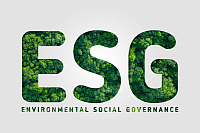Why Materiality Assessments Are Critical for Effective ESG Strategy Development
In today’s business landscape, environmental, social, and governance (ESG) factors are no longer just buzzwords; they have become integral to corporate strategy. As investors, consumers, and regulators increasingly prioritise sustainability, companies must develop robust ESG strategies to stay competitive and maintain their social license to operate. Central to the success of these strategies is the materiality assessment—a tool that helps organisations identify and prioritise the ESG issues most relevant to their operations and stakeholders. In this blog, we will explore why materiality assessments are crucial for effective ESG strategy development and how they guide companies in navigating the complex landscape of sustainability.
What is a Materiality Assessment?
A materiality assessment is a process that helps organisations determine which ESG issues are most significant to their business and stakeholders. The concept of "materiality" in this context refers to the relevance and significance of certain ESG factors in affecting a company’s financial performance, reputation, and overall sustainability. Materiality assessments involve evaluating a wide range of ESG issues—such as climate change, human rights, diversity and inclusion, supply chain management, and corporate governance—and ranking them based on their impact on the business and the concerns of key stakeholders like investors, customers, employees, and regulators.
The Importance of Materiality Assessments in ESG Strategy
1. Aligning ESG Efforts with Business Objectives
One of the most significant benefits of conducting a materiality assessment is that it helps align a company’s ESG initiatives with its broader business objectives. By identifying the ESG issues that are most material to the business, companies can focus their resources on areas where they can have the greatest impact. This alignment ensures that ESG efforts are not only sustainable but also contribute to the company’s long-term success. For example, a company in the manufacturing sector might find that reducing greenhouse gas emissions is a critical material issue due to regulatory pressures and the environmental impact of its operations. By focusing on this issue, the company can achieve regulatory compliance, reduce operational risks, and enhance its reputation as an environmentally responsible business. 2. Meeting Stakeholder Expectations
Stakeholders—ranging from investors and customers to employees and communities—are increasingly demanding that companies demonstrate a strong commitment to ESG principles. A materiality assessment helps organizations understand the ESG concerns of their stakeholders and prioritize those that are most important. For instance, investors are increasingly incorporating ESG factors into their decision-making processes, seeking companies that are proactive in managing ESG risks and opportunities. By identifying and addressing material ESG issues, companies can better meet investor expectations, potentially attracting more capital and improving their market valuation. 3. Enhancing Risk Management
Materiality assessments play a crucial role in enhancing a company’s risk management framework. ESG issues, such as climate change, supply chain disruptions, and labour practices, can pose significant risks to a company’s operations and financial performance. A materiality assessment helps identify these risks early, allowing companies to develop strategies to mitigate them effectively. For example, a company that identifies water scarcity as a material issue can take steps to improve water efficiency in its operations, thereby reducing the risk of operational disruptions and regulatory penalties. This proactive approach not only minimises risks but also positions the company as a leader in sustainability. 4. Improving ESG Reporting and Transparency
Accurate and transparent ESG reporting is essential for building trust with stakeholders and meeting regulatory requirements. Materiality assessments provide the foundation for meaningful ESG reporting by ensuring that companies focus on the most relevant issues. This focus leads to more accurate and credible reports that reflect the company’s true sustainability performance. Moreover, materiality assessments help companies avoid the pitfalls of “greenwashing”—the practice of making misleading claims about a company’s environmental practices. By focusing on material issues, companies can provide stakeholders with a clear and honest picture of their ESG efforts, thereby enhancing their credibility and reputation. 5. Driving Continuous Improvement
The business environment and stakeholder expectations are constantly evolving, making it essential for companies to regularly reassess and update their ESG strategies. Materiality assessments are not a one-time exercise; they should be conducted periodically to reflect changing circumstances and priorities. By regularly updating their materiality assessments, companies can ensure that their ESG strategies remain relevant and effective, driving continuous improvement in sustainability performance.
Conclusion
In an era where ESG considerations are becoming increasingly critical to business success, materiality assessments are an indispensable tool for developing effective ESG strategies. By helping companies identify and prioritise the most relevant ESG issues, materiality assessments ensure that ESG initiatives are aligned with business objectives, meet stakeholder expectations, enhance risk management, improve reporting transparency, and drive continuous improvement.

